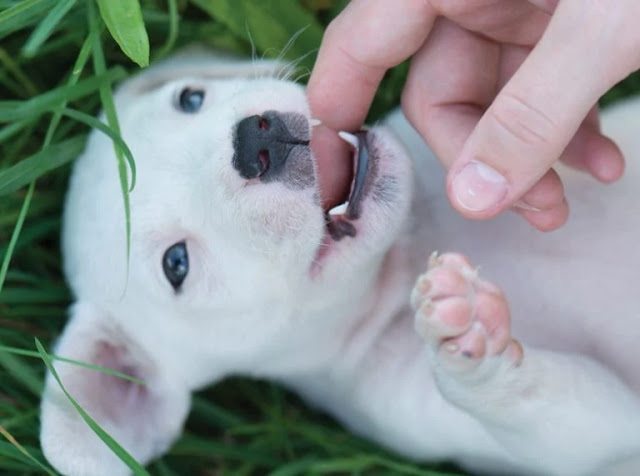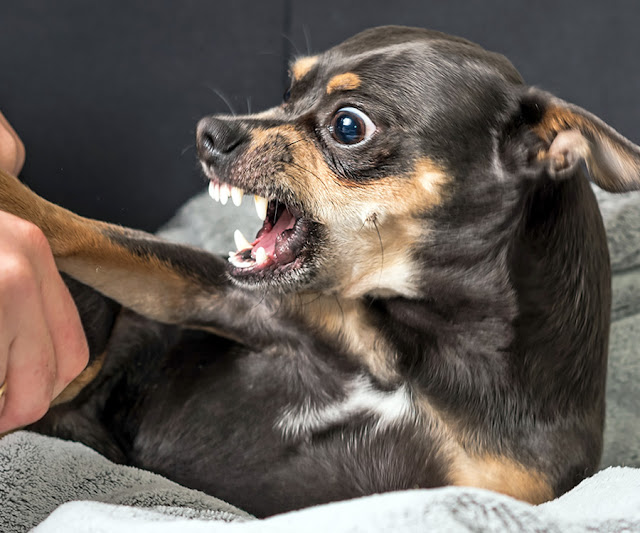how to teach a puppy not to bite? A comprehensive guide
Teaching Bite Inhibition
One of the most important aspects of training a puppy is teaching them not to bite. Puppies have a natural urge to explore the world around them with their mouths, but it’s crucial to redirect this behavior and teach them proper bite inhibition. By doing so, you can ensure that your puppy grows up to be a well-behaved and friendly adult dog. In this article, we will discuss effective techniques on how to teach a puppy not to bite.
Puppy Biting Training
When it comes to puppy biting training, consistency and patience are key. Puppies have sharp teeth and tend to nip or bite during play. While this behavior may seem harmless when they are small, it can become a problem as they grow older. By addressing this behavior early on, you can prevent it from developing into a habit. Let’s take a look at some effective strategies to stop puppy biting.
Redirecting Behavior
One effective technique to stop puppy biting is by redirecting their behavior. Whenever your puppy tries to bite or nip at you, give them a firm “no” command and immediately redirect their attention to a toy or chew bone. This helps them understand that biting humans is not acceptable, but chewing on appropriate objects is. Be consistent and provide plenty of appropriate toys for your puppy to chew on.
Positive Reinforcement
Using positive reinforcement is another effective approach to teach a puppy not to bite. Whenever your puppy shows restraint and refrains from biting, reward them with praise and treats. This helps them associate good behavior with positive rewards. Over time, they will learn that not biting leads to positive outcomes, which encourages them to continue this behavior.
Teaching Bite Inhibition
Bite inhibition is the ability of a dog to control and limit the force of their bites. It is an important skill for all dogs to have, as it allows them to interact with humans and other animals without causing harm. Teaching bite inhibition to your puppy involves gradual training and careful observation.
Start by allowing your puppy to mouth or gently nibble on your hand. If they bite down too hard, say “ouch” in a high-pitched voice to startle them. This mimics the yelping sound another puppy would make during play when bitten too hard. Immediately withdraw your hand and ignore your puppy for a few seconds. This teaches them that biting too hard results in the play session ending.
After the short pause, resume play with your puppy using a toy or chew bone. If they continue to bite gently, praise and reward them. Repeat this process consistently, gradually increasing the pressure allowed before saying “ouch” and withdrawing. With time and repetition, your puppy will learn to control the force of their bites.
How to Teach a Puppy Not to Bite Hands
Puppies tend to have a special fascination with hands and fingers. They are drawn to the movement and often see them as toys to bite and chew on. To teach a puppy not to bite hands, it’s essential to set clear boundaries and provide alternative outlets for their chewing needs.
Start by offering your puppy a toy whenever they try to bite your hands or fingers. This helps redirect their attention and energy towards an appropriate object. If they continue to go for your hands, calmly say “no” and withdraw your hands. Be consistent and avoid encouraging any behavior that involves mouthing or biting of hands.
Additionally, it’s important to provide plenty of mental and physical stimulation for your puppy. Boredom can often lead to increased biting behavior. Engaging them in interactive play sessions, providing puzzle toys, and going for regular walks can help alleviate their excess energy and reduce the tendency to bite hands.
How to Teach a Puppy Not to Bite Hard
When teaching a puppy not to bite, it’s crucial to address the intensity of their bites. Even playful mouthing can become painful if their bites are too hard.
Here are some techniques to teach a puppy not to bite hard:
1. Yelp Method: As mentioned earlier, yelping in a high-pitched voice when your puppy bites too hard can startle them and teach them that biting with excessive force is not acceptable. However, be cautious not to yelp too loudly and scare or intimidate your puppy.
2. Time-Out Technique: If your puppy persists in biting too hard, give a firm “no” command and immediately withdraw your attention. Walk away and ignore your puppy for a short period. This helps them understand that engaging in rough biting behavior results in the loss of play and attention.
3. Gentle and Consistent Correction: When your puppy’s bites become too hard, gently hold onto their lower jaw using your hand, applying mild pressure without causing any harm. This mimics the corrective action a mother dog would take with her puppies. Maintain this gentle restraint for a few seconds, and then release. This technique helps them understand that hard bites have unpleasant consequences.
How to Teach a Puppy Not to Bite Other Dogs
It’s not only important to teach your puppy not to bite humans but also to discourage biting other dogs. Socializing your puppy with other dogs from an early age can help them learn appropriate behavior and bite inhibition.
Here are some tips on how to teach a puppy not to bite other dogs:
1. Controlled Socialization: In controlled environments, introduce your puppy to well-behaved, fully vaccinated dogs. Allow them to interact and play together, but closely supervise their interactions. If your puppy starts biting too hard, intervene and redirect their behavior towards appropriate play.
2. Puppy Training Classes: Enroll your puppy in obedience or puppy training classes. These classes provide structured socialization opportunities where your puppy can learn to interact with other dogs under the guidance of a professional trainer. The trainer can address any biting issues and provide techniques to discourage inappropriate behavior.
3. Watch for Warning Signs: Learn to recognize the warning signs of escalating play and potential aggression between dogs. If your puppy or another dog begins to exhibit signs of discomfort or fear, intervene and separate them. It’s important to ensure your puppy has positive and safe experiences when interacting with other dogs.
Remember, teaching a puppy not to bite requires time, consistency, and patience. It’s essential to provide appropriate outlets for their chewing needs and redirect their attention towards toys or chew bones. With consistent training and positive reinforcement, your puppy will eventually learn to control their biting behavior and become a well-mannered adult dog.














One Comment